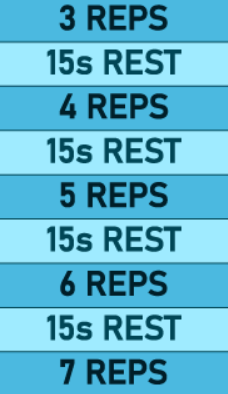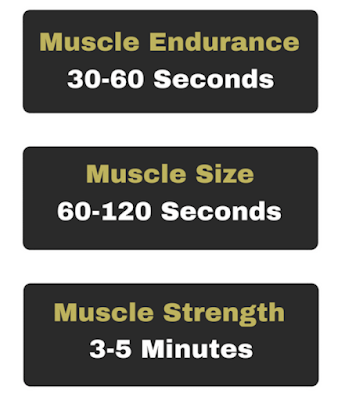Most people are aware that exercise can improve quality of life and lifespan. However, most people do not that there are three types of exercise required to optimize overall health and longevity:
Zone 2 Cardiovascular Exercise
High Intensity Cardiovascular Exercise
Resistance Training
Each of these forms of exercise confers a specific set of benefits and contributes to longevity. Therefore, the optimal exercise longevity plan would include all three forms on a weekly basis.
Zone 2 Cardiovascular exercise requires exercise at a specific intensity for relatively long durations. The ideal way to know if you are in zone 2 is to measure blood lactate levels but this is not practical so the next best measurement is heart rate, and you can even assess proper intensity through a simple talk test.
Zone 2 exercise is exercise is done at 60 – 70% of your maximum heart rate. To learn how estimate max heart rate see this previous blogpost: https://workoutanytime.blogspot.com/2024/03/the-many-benefits-of-walking-and-zone-2.html The other way is to use the talk test which involves exercising at a steady intensity where you can talk comfortably in SHORT sentences, BUT you should start to feel a bit breathless with continuous talking!
To reap the physiological and life extension benefits of zone 2 exercise you should shoot for 150 minutes each week of Zone 2 training. Benefits begin with as little as 10 minutes per day if you are sedentary but to optimize results shoot for 150 minutes or longer. There is no ceiling to the accrual of benefits from Zone 2 exercise meaning more IS better, but the key is exercising at a steady pace that keeps you in Zone 2. Over time you will get more and more fit so your pace will have to increase to keep you in Zone 2 but avoid the temptation to go faster where you are breathless – save that for your High Intensity Interval Training.
Assessing progress with Zone 2 is simple if you are using heart rate monitoring. Over time you should be able to hold a faster pace (whether walking, swimming, or biking) while at the same time staying in Zone 2. This guarantees all the many physiological and life extension benefits of Zone 2 exercise described in the blogpost listed above.
High Intensity Cardiovascular Training aka High Intensity Interval Training (HIIT for short) involves short intervals at a very high intensity – between 85 – 100% of your maximum heart rate. There are many different HIIT protocols but the one that delivers the biggest bang for the buck is known as the Norwegian VO2 Max Protocol. It involves doing a warm-up followed by 4 minutes at the highest pace you can hold, getting your heart rate to 85 – 95% of your maximum heart rate then going at a slow pace (just moving steadily) for 3 minutes and repeating this 4 times! This is very challenging and NOT for beginners!
This should be done 1 – 2 times per week. This type of training is focused on improving your VO2 Max which is your maximum oxygen consumption capacity. To know that you are making progress with this type of exercise you can have your VO2 max measured on a regular basis. This involves an exercise test with respired gas analysis using a metabolic gas analyzer and can be done at hospitals or other performance training facilities and costs $120 - $150.
Resistance Training – is the final type of exercise required to extend Lifespan. The anti-aging benefits of resistance training include:
Maintaining muscle and bone mass
Maintaining strength
Maintaining the ability to be independent without requiring assistance for activities of daily living.
Maintaining blood sugar control because muscle pulls blood sugar out of circulation
In some respects, this is the most important type of exercise because without enough strength you cannot do Zone 2 exercise and definitely not HIIT training.
A key feature of aging is “Sarcopenia” or loss of muscle mass and strength. There are two keys to preventing this:
Proper Progressive Resistance Training
Optimal Protein Intake
It used to be assumed that this muscle loss was a very steady process, but research has discovered that sarcopenia is usually marked by periods of inactivity with large muscle loss that is never fully recovered. Even in young healthy people one week of bedrest can result in the loss of 2 – 3 lbs. of lean mass.
If you think about older family members you can probably recall events where you see “he was never the same after….” These events can be caused by injury, surgery, infections or just periods of being very sedentary.
All exercise helps to stimulate muscle mass and results in better use of amino acids from proteins in the diet, but the maximum stimulation occurs when we specifically challenge the muscles with resistance from free weight, resistance bands, pin-loaded exercise machines, or body weight resistance exercises like push-ups or bodyweight squats. Even walking up stairs helps build and maintain muscle mass in the lower body!
Anyone at any age can benefit from appropriate resistance training and increase their muscle mass and strength! However, this is one area where investment in personal training and working with an exercise professional is really important! Learning what type of resistance training is best for you based on your current fitness level, lifestyle and any injuries is critical for optimal results. Just 10 – 15 sessions with a qualified trainer can help you develop a personalized progressive resistance plan!
Optimizing Protein Intake is also key as mentioned above. To learn how to determine your daily needs and how to obtain it check out these previous blog posts:
https://workoutanytime.blogspot.com/2021/06/everything-you-need-to-know-about.html - part 1 on protein intake
https://workoutanytime.blogspot.com/2021/06/everything-you-wanted-to-know-about.html - part 2 on protein intake









